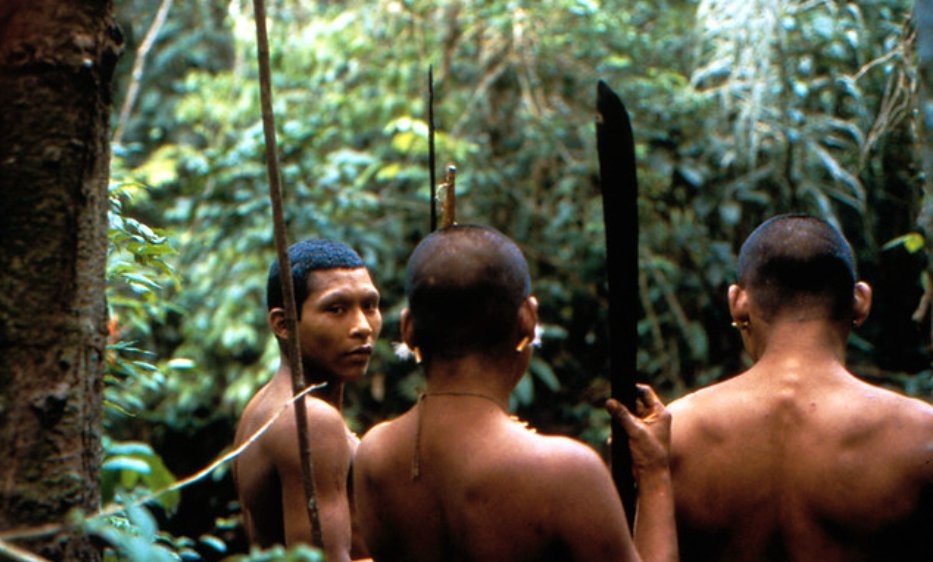
DISCOVER THE NUKAK TRIBE OF GUAVIARE IN COLOMBIA
In 1988 a group of unclothed indigenous tribes mainly composed of women, children, and some youths were seen for the first time in Calamar at the outskirts of the south-central region of Colombia in the Guaviare. This previously ‘uncontacted indigenous tribe’ was apparently heading towards their ancestral territory along the Unila and Itilla Rivers. The non-indigenous people living in Calamar also known as colonos made their first encounter with the tribe, who appeared out of nowhere.
Obviously, the colonos couldn’t communicate with the tribe since they spoke only their own indigenous language as per the Colombian linguist Leonardo Reina. He claimed that their language has a close relationship with the language spoken by the Kakwa tribe in the region. The ‘new-found’ tribe called themselves Nukak, and they live between the Guaviare and Inírida rivers situated on the edge of the Amazon basin.
Guaviare, Colombia
The Nukak formed part of the six foragers/hunter-gatherers group of people named as ‘ Makú’, which also explains why the Nukaks are also referred to as Nukak-Makú. However, the word Makú is believed to have a negative connotation as per the Argentinian archaeologist Gustavo G. Politis. According to his studies, the word Makú which means servant or slave has its origin from Arawak or Tukano around the northwest Amazon. Generally, the Makú group of people are considered as nomads as they are constantly moving in the deep jungle with their few belongings, which are normally transportable- think hammocks, pots, and handcrafted backpacks.
But the abrupt appearance of the Nukak tribe back in the late 1980s has for sure attracted much attention in the media. Their reason for moving to this part of the region has been debatable for many years. And one of the explanations could be due to the massacre of Nukak that occurred in the Guaviare area more precisely on the edge of the Savanna de la Fuga.
image: Galo Naranjo
After this weird encounter, the Nukaks were regularly seen in the centers of the colono population in regions such as Tomachipán, Guanapalo, including Calamar. As per some anthropologists, there were two possible reasons why there was an accelerating contact process with the tribes. Firstly, the missionaries present in these regions were treating the Nukak better than the hostile colonos, and secondly which is still alarming is the fact that there has been a rush of Coca plantation in the Nukak territory, and consequently has caused a notable shrinkage of the forest, and the Nukak land.
The high presence of the Colombian left-wing guerrilla, the Revolutionary Armed Forces of Colombia (FARC), and the right-wing paramilitary army (AUC) has led to a disturbing atmosphere in the indigenous land. Sometimes the indigenous tribes are forced to work in the coca fields and flee their land. And being in contact with the outsiders has unfortunately brought many devastating diseases such as malaria and flu among the indigenous community causing a 50% decline in their population.
As per the National Organization of Indigenous People of Colombia (ONIC – Organización Nacional de Indígenas de Colombia) currently, the Nukak tribe is listed as being at an ‘imminent risk of extinction’ among other 32 tribes, including Wachina and Wipiwi in Colombia. And thanks to the painstaking job of non-profit organizations such as ONIC and Survival International in 1997 the Colombian government decided to extend the Nukak territory up to 1 million hectares of forest.
Nukak Tribe – Culture
The Nukak tribe generally live in small groups of people composing between nine to thirty people. They move occasionally as per the seasons and food availability. Traditionally, their habitats are made up of light structures such as wood and palm leaves, and they normally sleep in hammocks. Each household consists of a hearth used for various purposes such as for cooking, keeping warm, and burning plants to keep away from the mosquitoes.
The Nukak tribe acquires their food through hunting by using a blowgun and poison darts to shoot animals living above the jungle floor. They also fish or forage for fruits, nuts, honey, and insects. Though, they avoid killing deer and tapirs as they believe that these animals are related to humans.
Just like in any culture, the Nukak meet periodically for rituals, ceremonies, and celebrations. And marriage generally takes place within a certain group to avoid marrying cousins from the mother’s side.


